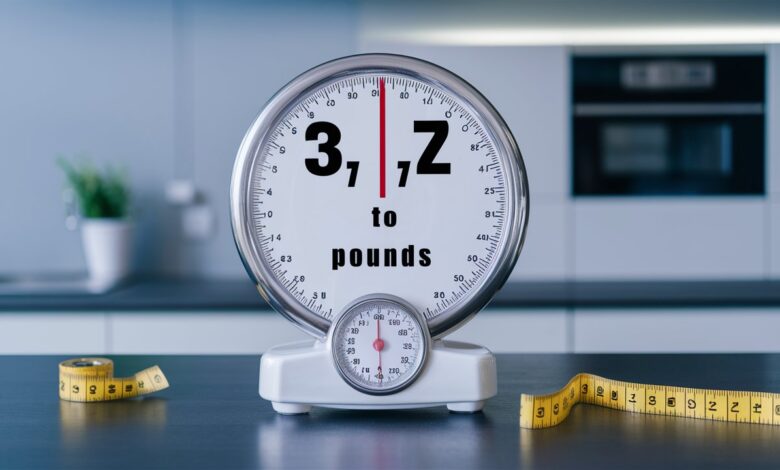3.4 Kilos to Pounds: A Comprehensive Conversion Guide

Understanding unit conversions is essential in a globalized world where different systems of measurement coexist. Whether you’re tracking fitness progress, cooking with international recipes, or shipping packages, converting kilograms (kg) to pounds (lbs) is a common task. This article focuses on converting 3.4 kilos to pounds, providing detailed explanations, practical examples, and answers to frequently asked questions. By the end, you’ll master the math behind the conversion and learn how to apply it in real-life scenarios.
Understanding Kilograms and Pounds
Kilograms and pounds are units of mass used in the metric and imperial systems, respectively. The kilogram is the base unit of mass in the International System of Units (SI) and is widely adopted worldwide, particularly in science and daily life outside the United States. In contrast, the pound (lb) is predominantly used in the United States and a few other countries for measuring body weight, groceries, and smaller objects.
The key difference lies in their definitions: 1 kilogram equals approximately 2.2046 pounds, a fixed conversion factor derived from international agreements. This ratio ensures consistency across industries like aviation, logistics, and healthcare. For example, a 3.4 kg package sent internationally must be converted to pounds for customs declarations in the U.S.
The Conversion Formula: Kilograms to Pounds
The formula to convert kilograms to pounds is straightforward:
Pounds = Kilograms × 2.2046
This multiplier accounts for the proportional relationship between the two units. To convert 3.4 kilos to pounds, multiply 3.4 by 2.2046. Let’s break this down:
- 3.4 kg × 2.2046 = 7.49564 lbs
- Rounded to two decimal places, this equals 7.50 lbs.
For everyday use, rounding to 7.5 pounds is acceptable, but precision matters in fields like engineering or pharmaceuticals. Understanding the formula empowers you to convert any kilogram value to pounds manually, reducing reliance on digital tools.
Step-by-Step Conversion of 3.4 Kilos to Pounds
Let’s walk through the conversion of 3.4 kg to lbs in detail:
- Start with the value in kilograms: 3.4 kg.
- Multiply by the conversion factor: 3.4 × 2.2046.
- Calculate the result: Use a calculator for accuracy.
- 3.4 × 2 = 6.8
- 3.4 × 0.2046 = 0.69564
- Total = 6.8 + 0.69564 = 7.49564 lbs
- Round as needed: For simplicity, 7.5 lbs is practical.
This method ensures clarity, especially for those unfamiliar with decimal multiplication. Practicing this process helps build confidence in handling conversions independently.

Practical Applications of Converting 3.4 kg to lbs
Knowing how to convert 3.4 kilos to pounds is useful in numerous contexts:
- Fitness and Health: If a weight loss program tracks progress in pounds, converting 3.4 kg (a common monthly goal) to 7.5 lbs provides clarity.
- Cooking and Baking: Recipes using metric measurements can be adapted for U.S. kitchens. For instance, 3.4 kg of flour equals roughly 7.5 pounds.
- Travel and Shipping: Airline baggage limits often use pounds. A 3.4 kg suitcase is approximately 7.5 lbs, helping avoid excess fees.
These examples highlight the importance of mastering conversions for seamless cross-cultural and cross-industry communication.
Tools and Resources for Unit Conversions
While manual calculation is educational, digital tools offer speed and accuracy:
- Online Converters: Websites like RapidTables or UnitConverters.net provide instant results for 3.4 kg to lbs.
- Mobile Apps: Apps like “Convert Units” or “Metric Conversions” allow offline access.
- Conversion Charts: Print-friendly charts with common values (e.g., 1–10 kg to lbs) serve as quick references.
- Smart Assistants: Ask Alexa or Google, “What is 3.4 kilos in pounds?” for voice-activated solutions.
Combining these tools with foundational knowledge ensures you’re prepared for any conversion challenge.
Why Accuracy Matters in Unit Conversions
A small error in conversion can lead to significant issues. For example:
- In medicine, misinterpreting 3.4 kg (7.5 lbs) as 7 lbs could result in incorrect drug dosages.
- In sports, a 3.4 kg plate mistakenly recorded as 8 lbs (instead of 7.5 lbs) might affect an athlete’s training regimen.
Precision fosters safety, compliance, and efficiency, underscoring the value of double-checking conversions in critical tasks.
Conclusion
Converting 3.4 kilos to pounds is a simple yet vital skill in an interconnected world. By understanding the formula (kg × 2.2046), practicing the calculation, and leveraging tools, you can effortlessly switch between metric and imperial units. Whether for personal, professional, or academic purposes, this knowledge bridges measurement gaps and enhances accuracy in diverse scenarios.
Frequently Asked Questions (FAQs)
Q1: Can I round 2.2046 to 2.2 for simpler calculations?
Yes, rounding to 2.2 is acceptable for quick estimates. However, this introduces a slight error (e.g., 3.4 kg × 2.2 = 7.48 lbs vs. the exact 7.49564 lbs). Use precise values for technical tasks.
Q2: What is the exact pound equivalent of 3.4 kilograms?
The precise value is 7.49564 pounds, though 7.5 lbs is commonly used.
Q3: Why is the conversion factor 2.2046?
This factor stems from the international definition of 1 kilogram as equal to 2.2046226218 pounds, standardized for global consistency.
Q4: How do I convert pounds back to kilograms?
Divide the pound value by 2.2046. For example, 7.5 lbs ÷ 2.2046 ≈ 3.4 kg.
Q5: Are kilograms and pounds used for the same purposes?
While both measure mass, kilograms are standard in science and most countries, whereas pounds are prevalent in the U.S. for body weight and everyday items.